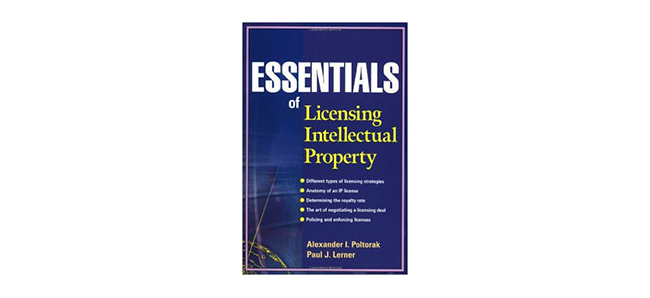Essentials of Licensing Intellectual Property
As an attorney who works with small businesses, a big part of my job is educating clients on the law. This is especially true when it comes to intellectual property issues. I am always happy to find easy-to-read introductory books that I can recommend to my clients. I recently had a chance to read one such book, “Essentials of Licensing Intellectual Property,” and can recommend it to small business clients looking for an overview on how to make intellectual property work for their business.
What’s In This Book?
Although the author is an attorney, the book is not aimed at lawyers. Instead it is meant for “business executives and inventors”. The book provides a plain-english overview of the practical aspects of licensing trademarks, copyrights, and patents. It gives a (very!) brief overview of contract law, pointing out some of the more important issues that a license must address. As with most introductory books on intellectual property, the book also includes brief overviews of patent law, trademarks, copyrights, and trade secrets.
After getting the basics out of the way, it dives into the details of licensing. There are separate chapters for patent licenses, trademark licenses, trade secret licenses, and copyright licenses. Each of these chapters delves into details that are specific to that type of license. For example, the chapter on trademark licenses discusses the well-known problem of naked licensing (“Not as Much Fun as It Sounds!”), as well as warning about the fine line between trademark licensing and franchising.
The book concludes with a discussion of negotiating licenses and royalty rates and policing the deal once it is closed. As with the other chapters, this is another area where entire books have been written. Nevertheless, one has to start somewhere. If you are a business owner who is interested in protecting your intellectual property but does not know where to start, you should consider starting here.
Downsides of “Essentials of Licensing Intellectual Property”
The book is now over a decade old, and some of the information in it is a bit dated. And of course, reading a twenty-page chapter on patent licenses does not prepare you to draft or review one yourself. But for the non-lawyer, it remains an excellent overview of IP licensing, and offers plenty of value as an introduction to the small business owner of how to use intellectual property as a part of her business.
Not every legal problem requires a lawyer, even in intellectual property. But it can be hard to know when to seek legal help, or even what questions to ask. A book such as this one can help you know when it is time to contact your attorney, and what questions to ask. If you are a small business owner who would like to learn more about intellectual property licensing, this book may be worth your time.

